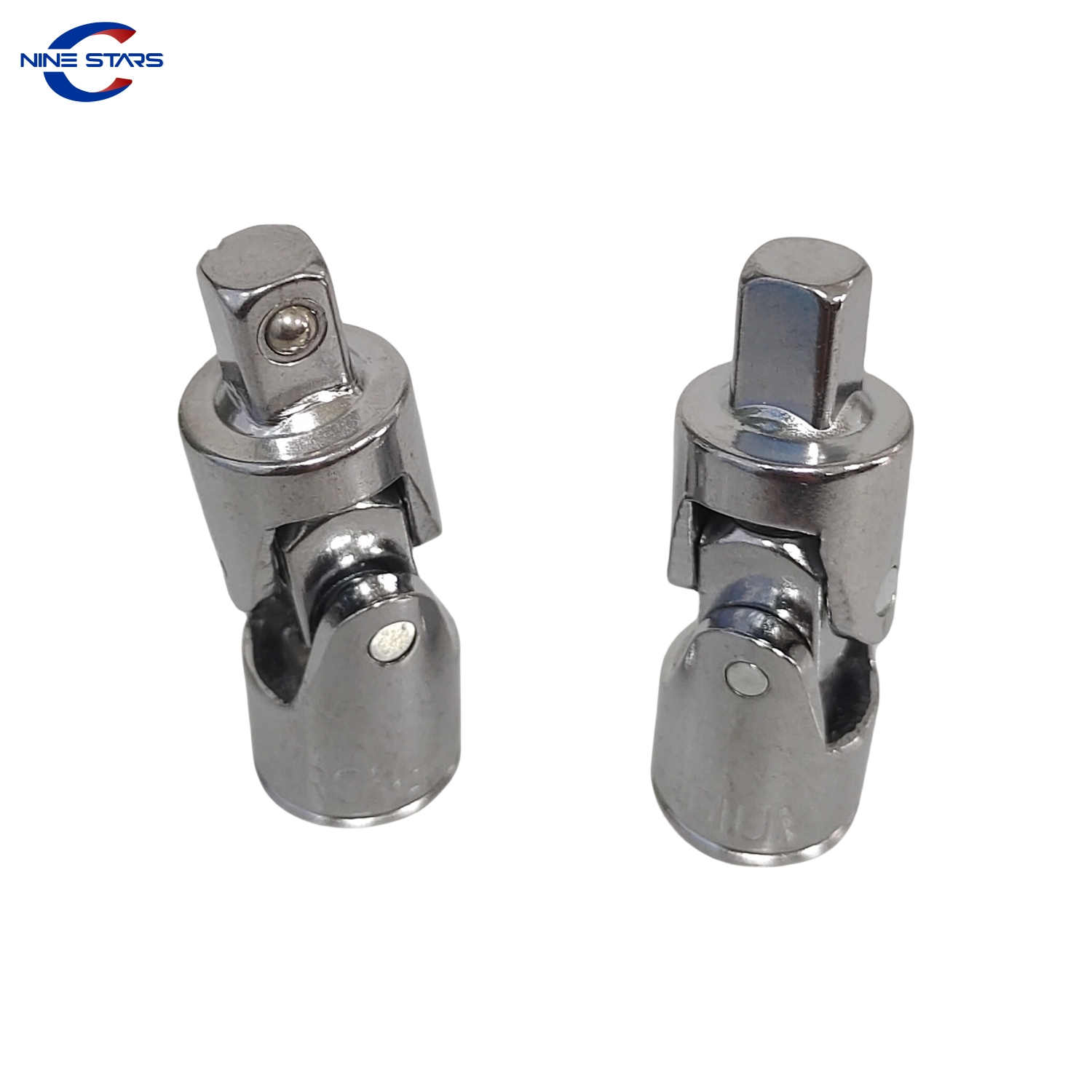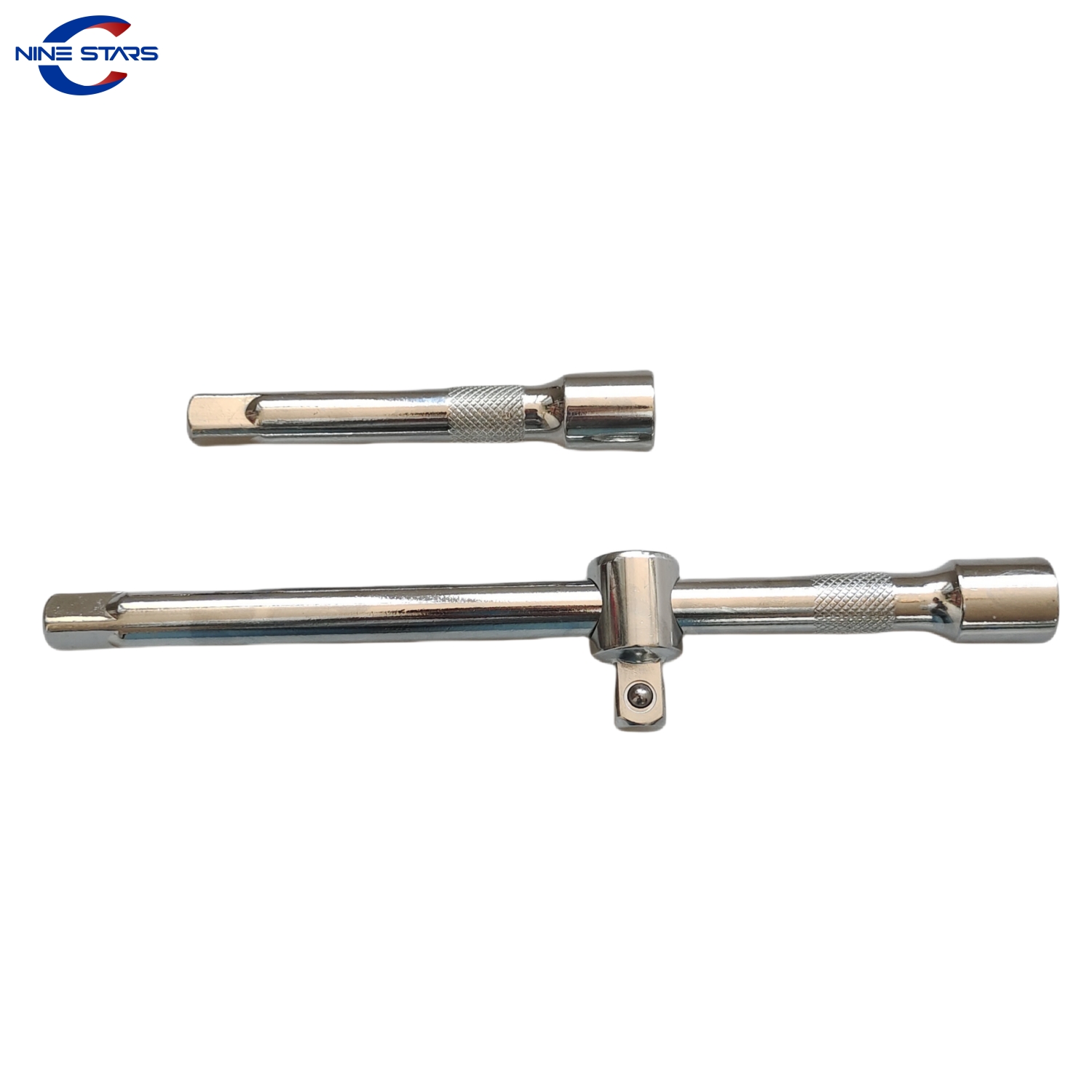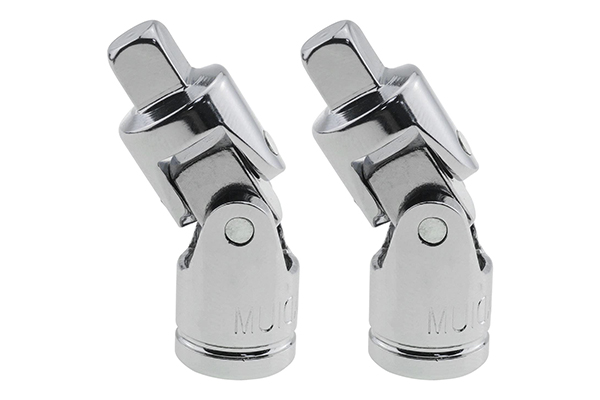Hello, I'm Allen, and for over two decades, I've been running a tool manufacturing facility here in China. I've seen tools evolve, and I've spoken with hundreds of buyers, from large retailers to independent workshop owners like Mark Thompson from the USA. One of the most consistently valuable, yet often misunderstood, components in any mechanic's arsenal is the universal joint. It's that small, flexible piece that can turn a frustrating, impossible-to-reach bolt into a simple task. This guide is for procurement professionals and business owners who need to source high-quality tools. We'll go beyond the basics to give you the insider knowledge you need, covering everything from the different types of steel used to the quality checks you should demand from your supplier. This article will help you understand the product deeply, so you can make confident, profitable purchasing decisions.
What Exactly is a Universal Joint in a Tool Set?
Think of a universal joint as the "wrist" or "knuckle" of your socket wrench set. It's a small, deceptively simple-looking tool designed to connect a ratchet or extension bar to a socket, but with a crucial difference: it allows for angular rotation. Its primary job is to transmit the turning force (torque) from your hand or power tool to a fastener that isn't perfectly aligned with the drive tool.
In our factory, we produce thousands of these joints every week, and we see them as problem-solvers. When a bolt is tucked away inside an engine bay, hidden behind a bracket, or positioned at a strange angle, a standard straight extension bar is useless. This is where the universal joint comes in. It provides the flexibility needed to bend the tool's path, granting you the ability to access fasteners at an angle.
This seemingly minor product is a cornerstone of efficiency in any mechanical work, especially in the automotive field. It saves time, reduces frustration, and can prevent the need to dismantle other components just to reach a single bolt. A high-quality tool set is incomplete without a reliable universal joint, as its absence creates a significant gap in capability.
How Does a Drive Universal Joint Work?
The magic of a drive universal joint lies in its simple yet ingenious mechanical design. The most common type, known as a Cardan joint, consists of a cross-shaped spider with four bearing caps. These caps fit into two U-shaped yokes, each connected to one end of the joint (one for the drive, one for the socket). This configuration allows the yokes to pivot on two separate axes.
Imagine holding your two fists out and linking them with your index fingers, one vertical and one horizontal. Now, you can bend one fist relative to the other in almost any direction. That's precisely how the joint works. As you turn the ratchet, the first yoke rotates, which in turn rotates the cross, and finally, the second yoke turns the socket. This mechanism allows the rotational force to be transmitted smoothly even when the input and output shafts are not aligned.
The key is that the joint allows for a change in angle while maintaining continuous rotation. However, it's important to understand that as the operating angle increases, the rotation becomes slightly less smooth and can introduce a "wobble" or uneven velocity. This is why for professional use, the precision of the manufacturing process is critical to minimize this effect and ensure the tool performs reliably under load.

Why is the Drive Size So Important? (1/4", 3/8", 1/2")
When you're sourcing tools, the drive size is one of the most fundamental specifications you'll encounter. This refers to the size of the square drive peg on the ratchet and the corresponding opening on the socket. Universal joints are made to match these standard sizes, and choosing the right one is critical for both functionality and safety.
-
1/4" Drive: This is the smallest and most delicate of the common sizes. It's designed for low-torque applications where precision is key. Think of interior trim, electronics, and small engine components. A 1/4" universal joint is perfect for getting into extremely tight spaces where larger tools simply won't fit. You'll often find these included in comprehensive kits like our 218 Pieces Tool Set, which covers a wide range of tasks.
-
3/8" Drive: This is the workhorse of the automotive and general maintenance world. It strikes the perfect balance between size, strength, and access. A 3/8" drive universal joint is arguably the most versatile and frequently used. It can handle a wide range of torque requirements, from engine sensors and brake calipers to general assembly and repair.
-
1/2" Inch Drive: When you need maximum strength for high-torque jobs, you reach for the 1/2" inch drive. These are built for suspension components, lug nuts, and large industrial fasteners. A 1/2" universal joint must be incredibly robust to handle the immense force applied by a long breaker bar or a powerful impact wrench. Our heavy-duty 1/2 Universal Joint is specifically engineered for this demanding environment.
As a buyer, ensuring you stock all three sizes is crucial to meeting the diverse needs of your customer base. Each drive size corresponds to a different class of jobs, and having the right tool is non-negotiable for a professional.
What's the Difference Between a Standard and an Impact Universal Joint?
This is a critical distinction that directly impacts safety and tool longevity—a point I always stress to buyers like Mark. Using the wrong type of joint can lead to catastrophic failure, potential injury, and damage to the workpiece.
A standard universal joint, often finished with a shiny full polish chrome, is made for use with hand tools like ratchets and breaker bars. An impact universal joint, typically with a black oxide or phosphate finish, is specifically designed to be used with pneumatic or electric impact wrenches.
Here is a simple table outlining the key differences from a manufacturer's perspective:
| Feature | Standard Universal Joint | Impact Universal Joint |
|---|---|---|
| Primary Material | Chrome Vanadium Steel (Cr-V) | Chrome Molybdenum Steel (Cr-Mo) |
| Hardness | Very hard and brittle. Resists wear from slow turning. | Softer and more ductile. Designed to absorb shock. |
| Appearance/Finish | Shiny chrome plating for corrosion resistance. | Black oxide or manganese phosphate finish. |
| Intended Use | Hand tools only (ratchets, breaker bars). | Power impact tools (impact wrenches, drivers). |
| Failure Mode | Can shatter or crack under sudden impact. | Tends to deform or twist before breaking. |
| Wall Thickness | Generally thinner walls. | Thicker, more robust walls to handle high torque. |
The core difference is the steel. Cr-V steel is very hard, which is great for preventing surface wear on a hand tool. However, this hardness makes it brittle. The violent, rapid hammering of an impact wrench will shatter it. In contrast, the impact universal joint is made from Cr-Mo steel, which is tougher and more ductile. It can flex and absorb the thousands of sudden impacts from a power tool without fracturing. Never, ever use a standard chrome joint with an impact wrench.
What Material Makes the Best Universal Joint? (The Great Steel Debate)
As a factory owner, the conversation always comes back to the raw materials. The quality of a tool is forged long before it takes its final shape—it begins with the quality of the steel. For universal joints, the two dominant materials are Chrome Vanadium (Cr-V) and Chrome Molybdenum (Cr-Mo), and neither is "better" in all situations. They are simply engineered for different purposes.
Chrome Vanadium (Cr-V) is the standard for high-quality hand tools. The vanadium increases strength, toughness, and shock resistance, while the chromium provides hardness and excellent corrosion resistance. This results in a tool that can withstand high turning force when applied gradually and will maintain its precise shape over years of use. For a standard universal joint, Cr-V is the ideal choice. We couple this with a high-quality chrome finish to create a product that is both durable and resistant to rust in a workshop environment.
Chrome Molybdenum (Cr-Mo), often called "chromoly," is the king of impact-grade tools. The molybdenum is the key ingredient here. It significantly increases the material's toughness and its strength at high temperatures. Most importantly, it allows the steel to flex and absorb sudden, sharp forces without breaking. This ductility is what makes it safe to use with an impact wrench. While it is not as hard as Cr-V (and may show surface wear more easily), its ability to withstand impact is unparalleled. The typical black oxide finish on these tools is not just for looks; it helps hold oil to prevent corrosion, as chrome plating would chip and flake off under impact.

How Can a Universal Joint Improve Access in Tight Spaces?
The primary reason a mechanic reaches for a universal joint is for one thing: access. Modern vehicles and machinery are packed with components, leaving very little room to work. A universal joint, often paired with an extension bar, provides the flexibility needed to navigate this maze.
Imagine trying to change a spark plug on an engine where the ignition coil sits directly on top, but the frame rail is just a few inches away. You can't get a straight shot with a ratchet. By using a universal joint, you can approach the spark plug from a slight angle, allowing the body of the ratchet to clear the obstruction. It allows you to reach around corners, over brackets, and into recessed areas that would otherwise be inaccessible.
This ability to work around obstructions is not just a convenience; it's a necessity. It turns a job that might require removing multiple other parts (a two-hour task) into a simple 15-minute fix. For professional mechanics, time is money. For a procurement officer like Mark, providing tools that solve these access problems adds direct value to his customers, making your product line more desirable than a competitor's that lacks these essential problem-solvers. The universal joint is the key that unlocks these tight spots.
What Should You Look for in a High-Quality Universal Joint Design?
Not all universal joints are created equal. As someone who oversees the production of these tools, I can tell you that small details in the design and manufacturing make a huge difference in performance and lifespan. When you're evaluating a potential supplier's product, here are the key things to look for:
-
Smoothness of Motion: A well-made joint should pivot smoothly and freely in all directions with minimal resistance or "gritty" feeling. This indicates high-precision machining of the yokes and cross. A stiff or catchy joint will bind under load and make the tool difficult to use.
-
Pin vs. Pinless Design: The traditional design uses pins to hold the cross inside the yokes. While effective, these pins can be a weak point. A more innovative and robust design is the "pinless" universal joint. In this design, a spherical ball-and-socket mechanism is used, which provides greater strength and a smoother transfer of torque, especially at higher angles. They are often more durable and are a feature of premium tool lines like Tekton.
-
Quality of the Finish: For standard chrome joints, look for a uniform, flawless full polish chrome plating. Any pits, flakes, or dull spots can be a sign of a poor plating process, which will lead to rust. For impact joints, the black oxide finish should be even and consistent.
-
Spring-Loaded Detent Ball: Check for a firm, spring-loaded detent ball on the drive end. This is what securely holds the socket onto the universal joint. A weak spring will allow the socket to fall off, which is frustrating and dangerous, especially when working above an open engine.
"As we say in our factory, the strength of a tool is in its steel, but its versatility is in its joints. A poorly made joint can render the finest ratchet useless." - Allen, Factory Owner.

How Do You Properly Use and Attach a Universal Joint?
Using a universal joint correctly is key to getting the most out of the tool and preventing damage to the joint, the fastener, and yourself. It’s a straightforward process, but a few best practices are essential.
First, you need to assemble your drive tool chain. The typical order is: Ratchet -> Extension (if needed) -> Universal Joint -> Socket. It's crucial to ensure each connection is secure. You should feel a positive "click" as the detent ball on each male end snaps into the female end of the next component. This prevents the parts from disconnecting during use.
When you attach a universal joint, the most important rule is to keep the operating angle as small as possible. A universal joint is strongest when it is nearly straight. The greater the angle, the more stress is placed on the pins and yokes, and the more inefficient the torque transfer becomes. If the angle is too extreme (typically over 45 degrees), the joint can bind or break. It's better to use a longer extension to get closer to the fastener and reduce the necessary angle of the joint. Always apply pressure in a straight line with the ratchet to avoid side-loading the joint, which can cause it to fail prematurely.
What Are Common Mistakes to Avoid When Using This Tool?
From my experience, most tool failures are due to improper use rather than manufacturing defects. For a versatile tool like the universal joint, knowing what not to do is just as important as knowing what to do. Here are the most common mistakes I see:
- Using a Chrome Joint with an Impact Wrench: This is the cardinal sin. As we've discussed, the brittle Cr-V steel of a standard joint will shatter under impact, sending metal fragments flying. It is incredibly dangerous.
- Applying Excessive Angle: Pushing the joint to its maximum angle and then applying full force is a recipe for disaster. This puts immense stress on the internal components and can cause the joint to bind and break.
- Using "Cheater Bars": Placing a pipe over a ratchet handle to increase leverage is always a bad idea, but it's especially damaging when a universal joint is in the system. The joint becomes the weakest link and will likely be the first thing to fail.
- Side Loading: Pushing sideways on the ratchet instead of rotating it smoothly puts an unnatural stress on the yokes of the joint, which can lead to premature wear and failure.
- Ignoring the "Wobble": At higher angles, you will feel a slight wobble or pulsing as you turn the ratchet. If this becomes excessive, stop. It's a sign that the joint is operating beyond its efficient range. Pushing through it can damage the fastener head or the tool itself.
How Can Buyers Like You Ensure Product Quality from Overseas Suppliers?
This is the most important question for any procurement officer like Mark, whose business depends on reliable suppliers. The distance and cultural differences can create challenges, but with the right approach, you can build strong, trustworthy partnerships. Here is my advice, from one business owner to another.
First, communication is everything. Your purchase orders must be crystal clear. Don't just ask for a "1/2 inch universal joint." Specify the material (Cr-V or Cr-Mo), the finish (full polish chrome or black oxide), the design (pin or pinless), and the quality standards it must meet (e.g., ASME/ANSI specifications). A good factory will appreciate this clarity. It helps us make the exact product you need and eliminates misunderstandings.
Second, demand transparency on certifications and testing. Don't be afraid to ask for material composition reports for the steel they use. At my factory, we conduct regular batch testing for hardness and torque tolerance. We are happy to share this data with our clients because it builds trust. Be wary of suppliers who are hesitant to provide this documentation. It can be a red flag. This also applies to things like ISO certifications for the factory itself.
Third, discuss logistics and packaging upfront. A quality tool can be damaged by poor packaging during its long journey. Specify your requirements for inner and outer cartons. Furthermore, a good partner will work with you to manage shipping schedules proactively. We know that a delay on our end can cause you to miss a sales opportunity, so we build buffer time into our production and shipping timelines to mitigate these risks. Partnering with a factory that understands and respects your business needs, like we do with our range of Tool Trolleys and Cabinets, is the key to a successful and profitable long-term relationship.
Key Takeaways
- Function: A universal joint is an essential tool that transmits torque at an angle, allowing access to hard-to-reach fasteners.
- Types: The two main types are standard (Chrome Vanadium, for hand tools) and impact (Chrome Molybdenum, for power tools). Never interchange them.
- Drive Size Matters: Choose the right drive size (1/4", 3/8", 1/2") based on the torque requirements of the job.
- Quality Indicators: Look for smooth motion, a durable pinless design, a flawless finish, and a strong detent ball to ensure you are sourcing a high-quality product.
- Proper Use: Always use the shallowest angle possible and apply smooth, rotational force to maximize the tool's lifespan and effectiveness.
- Supplier Vetting: To ensure quality from overseas, demand clear specifications, ask for material and testing certificates, and establish a transparent line of communication.
Post time: 08-05-2025



